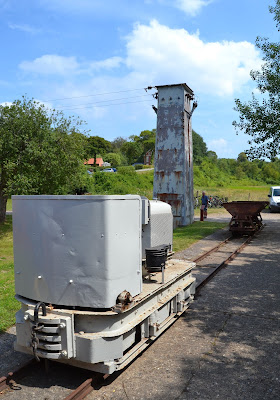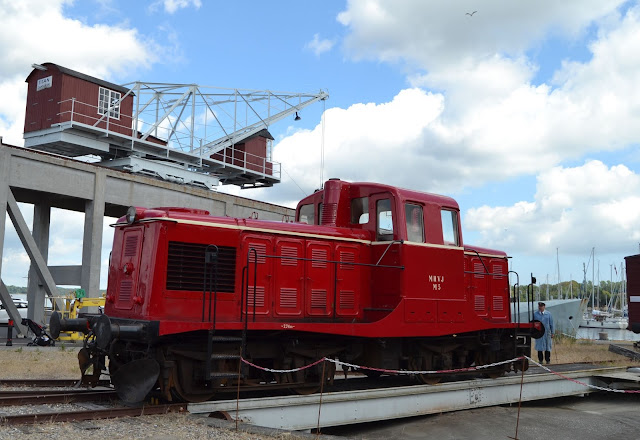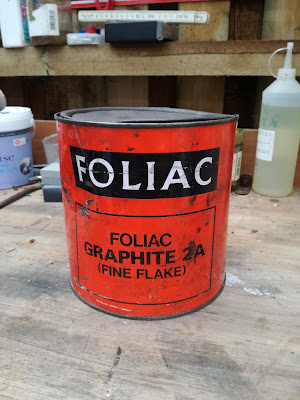I'm on my summer vacation which this year is held on several locations in Denmark. Saves on my carbon footprint and the weather is fine and there is always somthing interesting to see.
In 1960 there was 225 brickworks in Denmark. Today you can count them on two hands. Several structures are preserved across the country to honour the industry and workers. In the sourthern part of Denmark near the German border I visited the Cathrinesminde Brickworks Museum.
 |
| What is not to like? Blue sky, beautiful chimney, narrow gauge locomotive and a steel plated substation. |
Cathrinesminde Brickworks was opened in 1732, equipped with a ring kiln in 1892 and last used in 1968.
See the museum's website for further info. I visited the brickworks with my familiy and was pleased to see that there was a proper reenactment of old fashioned brick making by hand in progress.
The buildings appear to be in good condition and as the brickworks is a small facility the visitor can easily see every operation in a brick's manufacture. It may come as no surprise that one of my motivations for visiting the museum was to see its narrow gauge locomotive.
 |
| A rather harmonic industrial locomotive in 600 mm gauge most likely built by a local blacksmith Micheelsen Brothers on the basis of a Ford engine. Last time I saw the loco was in 1986 it was in private ownership. Later in that year it was given to the brickworks museum, the cab removed and over the years it has been repaired and now appears to be operational. |
 |
| A rear view of the loco and two unpainted standard skips. In the background the old clay pits. Plans for a short track to the pit have been shelved. Upon return to my worktable I will immediately investigate if I can include a steel plated substation next to the track on my coming 1/19 layout. |
The brickworks had its own pier for loading finished bricks in shallow vessels for transport. Two of the characteristic wagons for bricks have been preserved and they are exhibited with a full load of bricks. One of them have flangeless wheels and is positioned on a pair of flat rails with a low inner flange.
 |
| Wagon with flangeless wheels for transporting finished bricks for shipping. |
Apart from old machinery, informative posters and the volunteers reenacting brick making, the brick making process is also illustrated by several large scale models of a quite good quality. I have no idea of the scale, but from a distance it seems that the scale isn't far from 1:22-1:19 range.
 |
| The model illustrating loading finished bricks into a small sailing vessel. All work transferring the bricks was done by hand and often by women. Particularly during the Great War when the region was under German rule and the men away fighting. |
Earlier in the week I had the chance to ride the 17 km long
Mariager-Handest vintage railway. My train was pulled by a very charming diesel electric built by Frichs in 1953 with a whopping 375 hp.
 |
| MFVJ M 5 photographed beside the heritage listed Titan crane on Mariager harbour. |

























